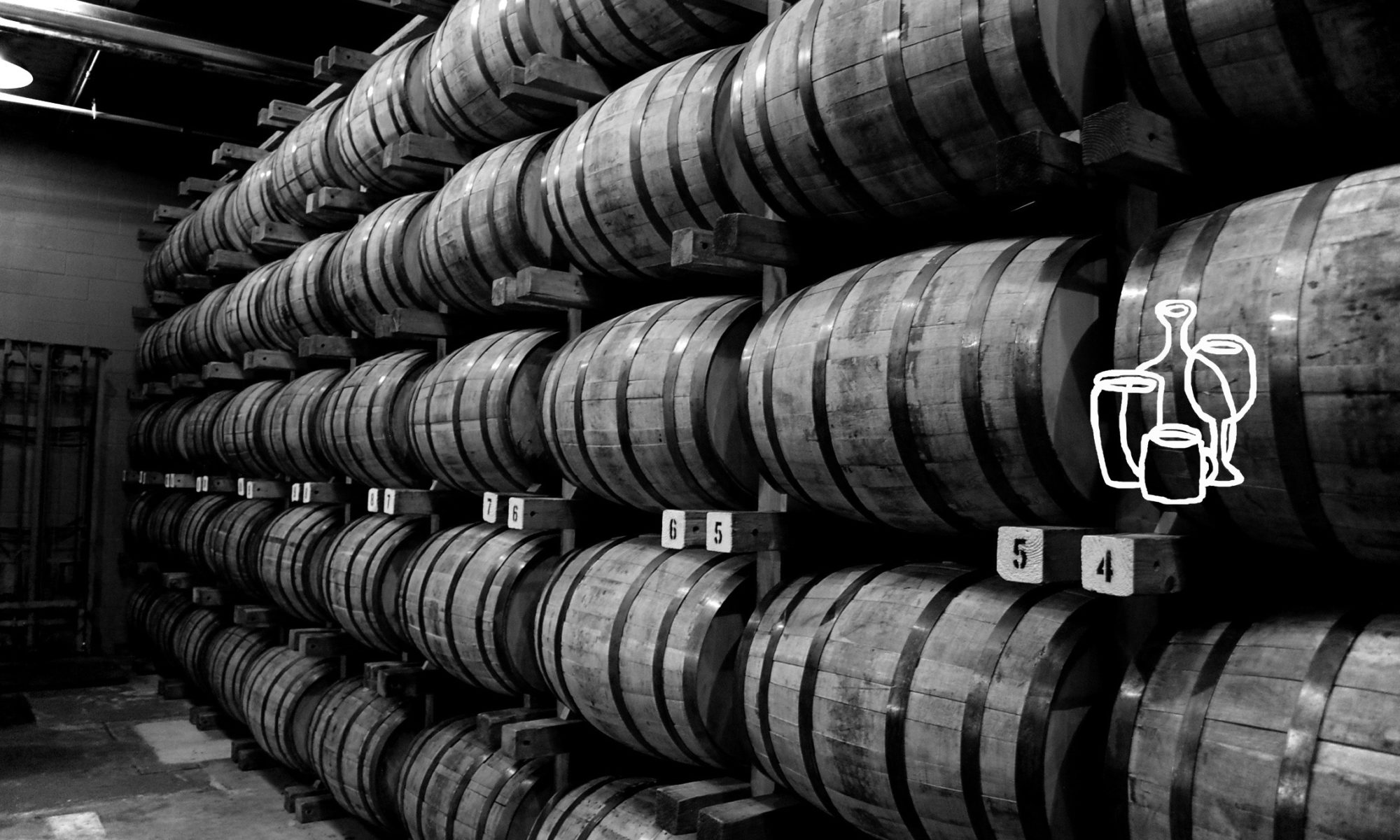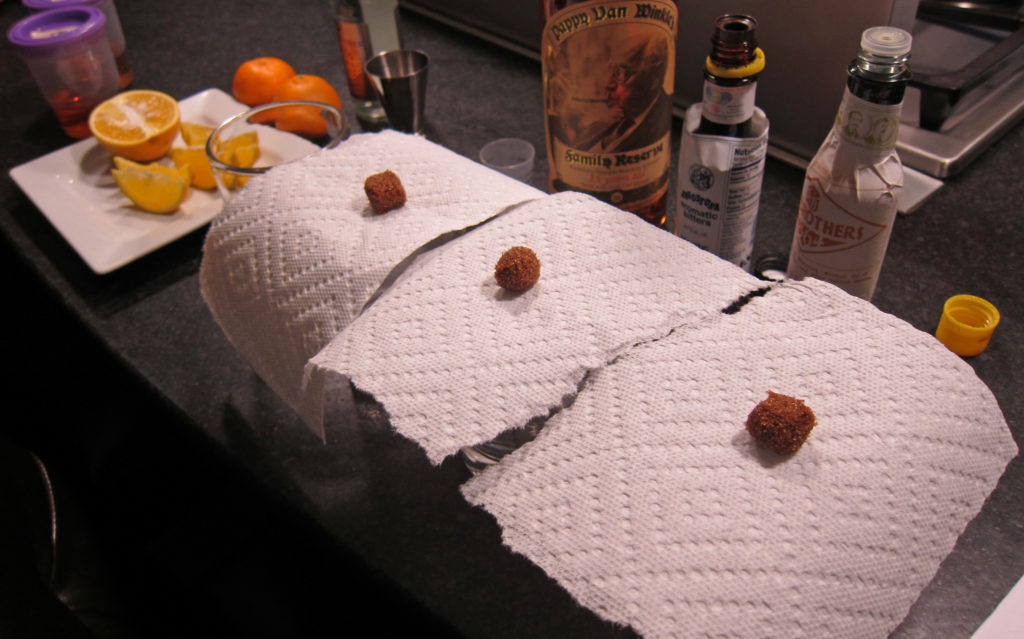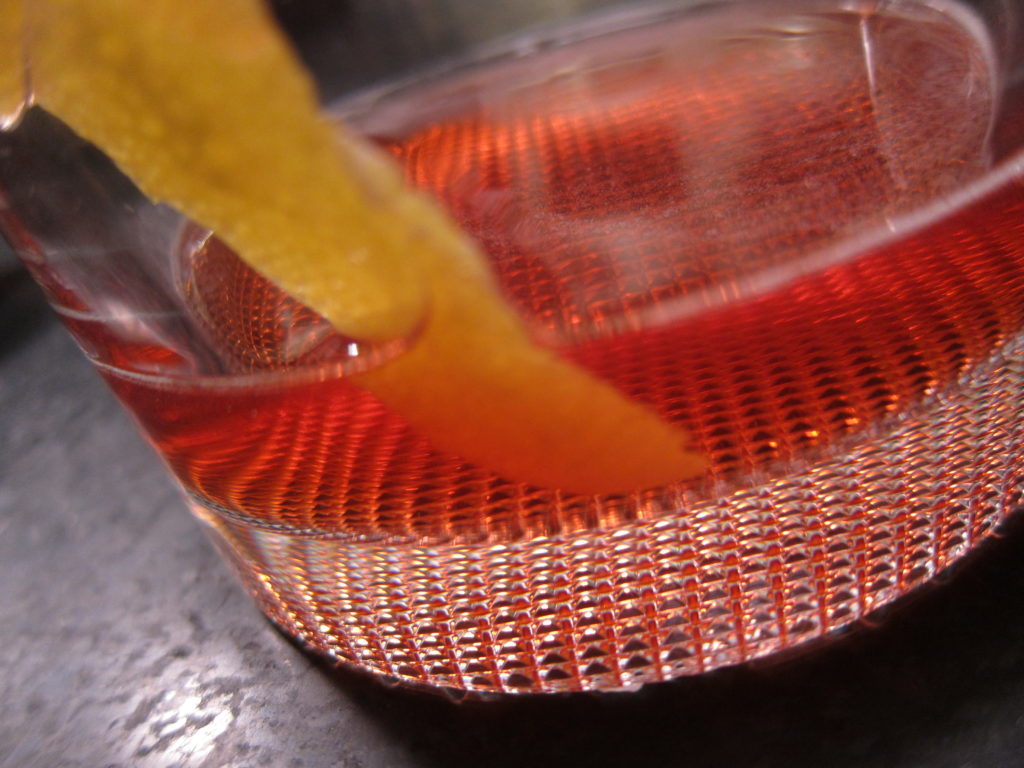 Rye has been on a steady upward swing over the past several years, driven in large part by the similar upward trajectory of classic cocktails. The notion that a proper Manhattan should be made with rye has taken hold, rightfully so in our opinion – the spicier profile of rye just balances so well with sweet vermouth and a touch of bitters. Of course, savvy distillers and marketers are looking to take advantage of this trend. Just this week, the folks behind Bulleit Bourbon introduced a new rye, Bulleit 95, Small Batch American Rye Whiskey. Bulleit 95 is 90 proof, 95% rye mash and 5% malted barley, and, according to Bourbonblog.com, is aged between 4 and 7 years. It’s also rumored (now confirmed) to be sourced from LDI in Indiana, whose production of Templeton Rye has impressed many. At $25-$30, Bulleit 95 competes squarely with the Russell’s Reserve 6 year old Kentucky Straight Rye Whiskey (also a “small batch”) – a level in price well above Old Overholt and well below the big bad boys like High West Rendezvous Rye, Thomas Handy and Van Winkle Family Reserve. We decided to undertake a “taste test” between the Bulleit 95, the Russell’s Reserve, and the Rittenhouse Bottled in Bond (100 proof, at least 4 years old), a much-lauded bargain bottle ($15-$22) that is increasingly hard to find.
Rye has been on a steady upward swing over the past several years, driven in large part by the similar upward trajectory of classic cocktails. The notion that a proper Manhattan should be made with rye has taken hold, rightfully so in our opinion – the spicier profile of rye just balances so well with sweet vermouth and a touch of bitters. Of course, savvy distillers and marketers are looking to take advantage of this trend. Just this week, the folks behind Bulleit Bourbon introduced a new rye, Bulleit 95, Small Batch American Rye Whiskey. Bulleit 95 is 90 proof, 95% rye mash and 5% malted barley, and, according to Bourbonblog.com, is aged between 4 and 7 years. It’s also rumored (now confirmed) to be sourced from LDI in Indiana, whose production of Templeton Rye has impressed many. At $25-$30, Bulleit 95 competes squarely with the Russell’s Reserve 6 year old Kentucky Straight Rye Whiskey (also a “small batch”) – a level in price well above Old Overholt and well below the big bad boys like High West Rendezvous Rye, Thomas Handy and Van Winkle Family Reserve. We decided to undertake a “taste test” between the Bulleit 95, the Russell’s Reserve, and the Rittenhouse Bottled in Bond (100 proof, at least 4 years old), a much-lauded bargain bottle ($15-$22) that is increasingly hard to find.
These three ryes make a fascinating lineup. In the glass, neat, the Russell’s Reserve has the lightest color, a light golden amber, despite the fact that it’s the only one that states its age – a solid six years. The Bulleit 95 kicks it up a notch to a delightful amber hue, and the Rittenhouse moves into deep copper territory, with a clearly thicker viscosity. On the nose, the distinctions are also clear. The Bulleit 95 is laden with sweet caramel, vanilla, oak and cherry, but evolves nicely in the glass, with layers of buttered popcorn weaving in and out of the toasty wood. The Russell’s Reserve instantly hits your nose with grassy, herbal notes, certainly more rye-like in character. And then the Rittenhouse brings the full on rye spice – heady, full, a touch of heat (it is 100 proof), and a molasses-y depth that calls to mind rum raisin.
Sipped neat, the Bulleit 95 has a lovely, lingering mouthwatering presence. The rye spice emerges here, and stays through for a long finish with a kick. This is a nice sipper, enough rye that you know what it is, but very well balanced. The Russell’s Reserve absolutely kicks it up a notch, more spice, more burn, more rye character. Not better per se, but definitely more of a prototypical rye. The Rittenhouse is a bit of a beast, and definitely benefits from a touch of water, with softens and smooths out its rough edges. As a sipping whiskey, the Bulleit 95 wins the round, though does not bring the combination of deep rye character that you will find in more expensive ryes like the High West Rendezvous.
The ultimate rye cocktail in our book is the Manhattan. Simple. Classic. Superbly balanced. We tried these three ryes in a classic combination of 2 parts rye to 1 part sweet vermouth, with two dashes of bitters and a twist of lemon. Here, the Bulleit 95 came across as a bit too mellow, allowing the vermouth to grapple away the drink. The Russell’s Reserve produced a very nice balance, but the assertiveness of the Rittenhouse really kicked the drink up a notch. We’re not saying that it will work better in all cocktails (or even with other variations of a Manhattan), but the Rittenhouse rye really makes a great Manhattan (and is a bargain to boot).
These three fine ryes are all worthy of a place in your bar – depending on what you’re looking for. Cheers to Bulleit for making a rye that stands apart, though it won’t be the rye that seizes the cocktail crown. The Rittenhouse Bottled in Bond is a stellar bargain and a superb cocktail rye. The Russell’s Reserve offers a solid middle ground, and if your tastes veer to the herbal, grassy edge of rye, this is the one for you. So… what’s your favorite rye… and why?

Bulleit 95 Rye, Straight American Rye Whiskey
90 proof
Approx. $25 retail
Tasting Date: February 28, 2011
Good Stuff – a very nice sipping whiskey, though somehow lacking in the full-on rye character despite the 95% rye mash
Rittenhouse Bottled in Bond Rye, Straight American Rye Whiskey
100 proof
Approx. $15 retail
Tasting Date: February 28, 2011
Good Stuff – a GREAT value for rye-based cocktails, sips nicely with a bit of water
Russell’s Reserve 6 year old, Kentucky Straight Rye Whiskey
90 proof
Approx. $28 retail
Tasting Date: February 28, 2011
Good Stuff – very nice overall rye for the price
For further reading, here’s a good little read by Greg Best of Atlanta’s Holeman & Finch: Rye: The resurgence of the other American whiskey
Update 1/4/2012: For those ready to step up to the big time, check out our BATTLE RYE between Van Winkle Family Reserve and High West Rendezvous Rye




















